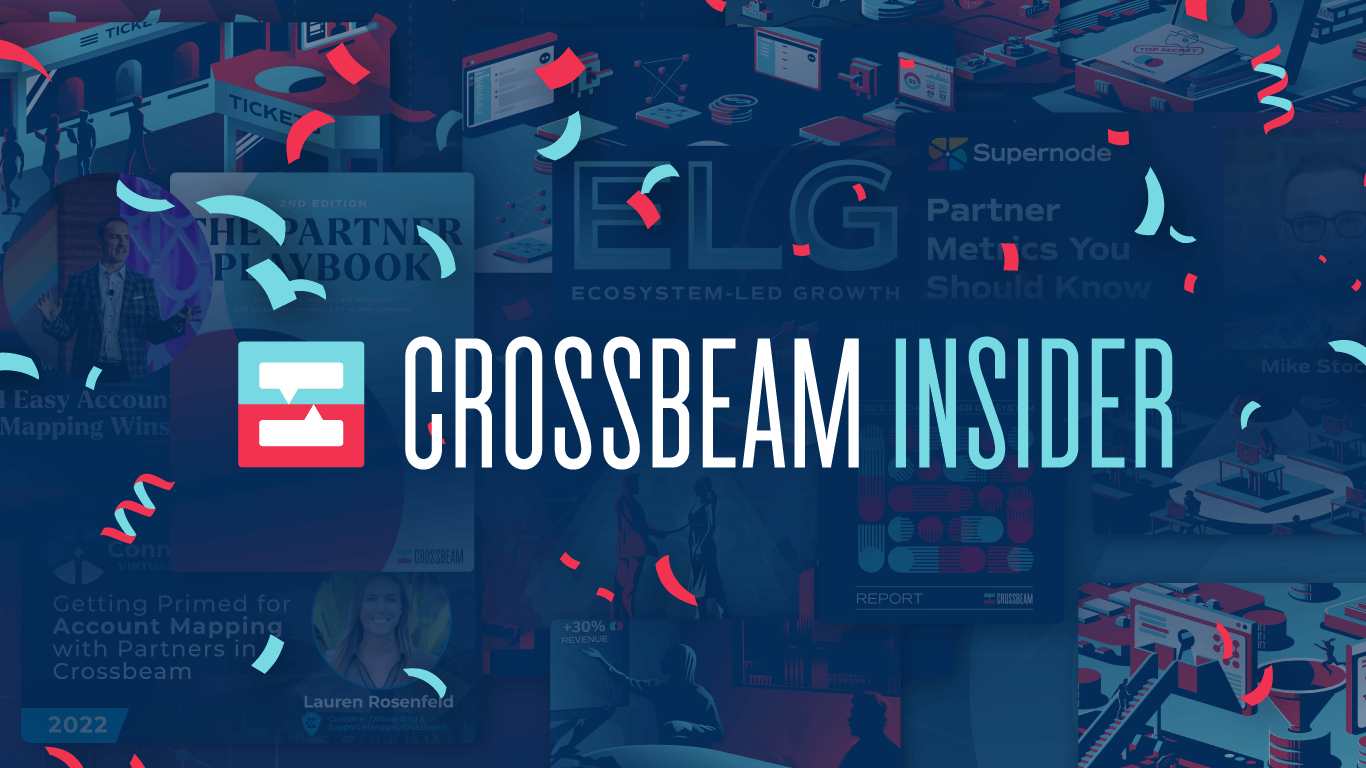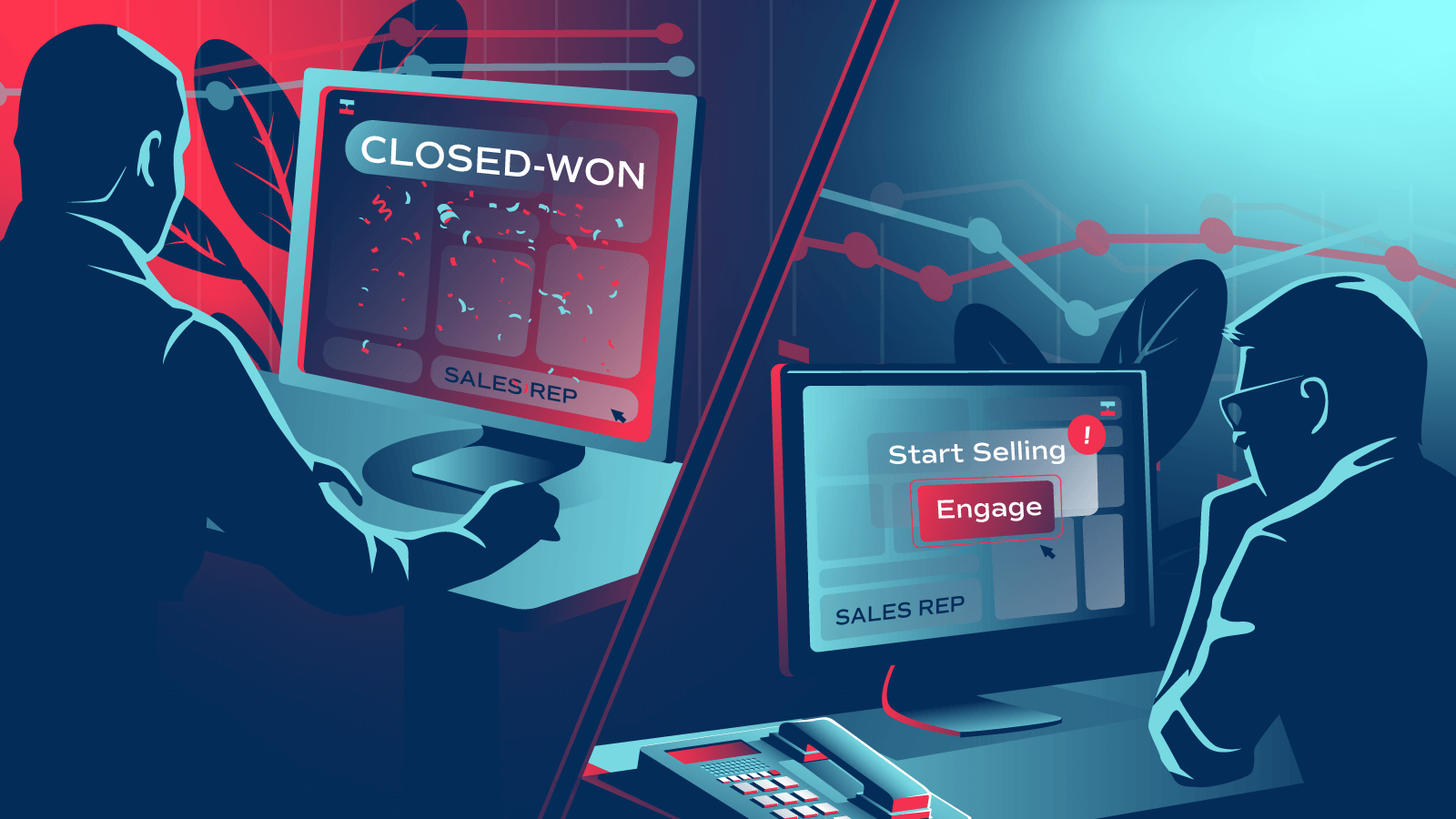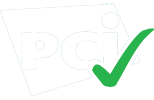Note: this is the latest in our Partnerships 101 series. You can read the others below:
- Partnerships 101: ISVs, VARs, SIs, MSPs, and the Glue that Holds them Together
- Partnerships 101: What’s a PRM and should I use one?
- Partnerships 101: How to Launch a Tech Partnership Program
- Partnerships 101: Account Mapping. How to (Finally) Do It Without Giant, Cumbersome Spreadsheets
- Partnerships 101: How to Organize and Execute an Online Event With Your Partners
Co-Marketing is when two companies partner to create a shared marketing campaign, introducing both companies to each other’s audiences. This joint project is usually “co-branded” featuring the logo, messaging, and branding from both partners.
A savvy SaaS partner manager uses co-marketing to expand their reach—sort of like when one of your friends introduces you to new people.

Co-Marketing can be anything from a co-authored blog post to a co-hosted event. But as veteran partner managers know, co-marketing isn’t easy.
At its heart, co-marketing requires you to send a communication or offer to both of your lists. But what happens if you share a customer? How do you avoid sending the same communication twice? How do you make sure your partner’s list is up to date? And what do you do if you’re working with more than three partners?
In this post we’ll review how to create an ideal co-marketing list that maximizes effectiveness and keeps both your partners and the people on your list happy. We’ll make sure your marketing is targeted to the right people to drive growth and give you plenty of example campaigns to inspire. We’ll cover:
- No more email blasts: How to create a bulletproof co-marketing list
- Co-marketing motion examples
- The benefits of co-marketing
No more email blasts: How to create a bulletproof co-marketing list
Before you figure out the “what” you need to know the “who.” Who is the ideal audience for your co-marketing campaign? And what are you trying to accomplish? Some examples:
- “I need to market our new integration to the right people”
- “My partner will send one of my offers to their customers”
- “My partner and I want to invite our shared prospects to a local happy hour”
There are two ways to approach making this list:
- Export both of your lists as spreadsheets, combine them, remove duplicates, and then import them into an email service provider. These lists are out of date the moment you export them and require some manual massaging and data manipulation to action.
- Use a Partner Ecosystem Platform.
A mature partner manager will use a Partner Ecosystem Platform like Crossbeam to laser target the right prospects, leads, or customers rather than just haphazardly blast an email to their entire list. We’ll show you how it works:
Step 1: Connect data, and create populations
Connect Crossbeam to your CRM platform. In this example, we’re using Salesforce. Go to the integrations page and follow the prompts. (You can also follow this tutorial).
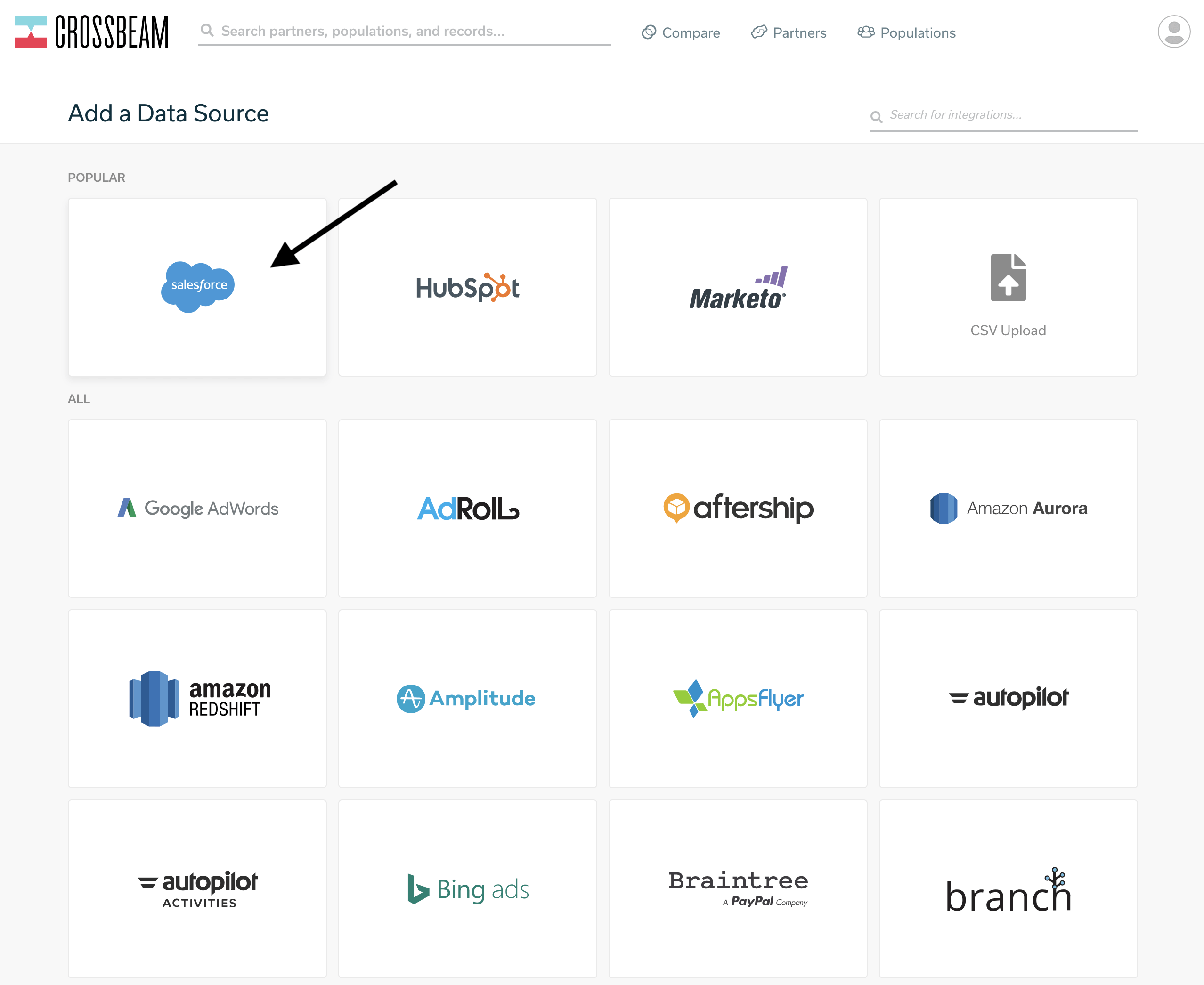
Next, you can create segmented groups (we call them “populations”) to use for comparison purposes.
- Customers
- Prospects
- Leads
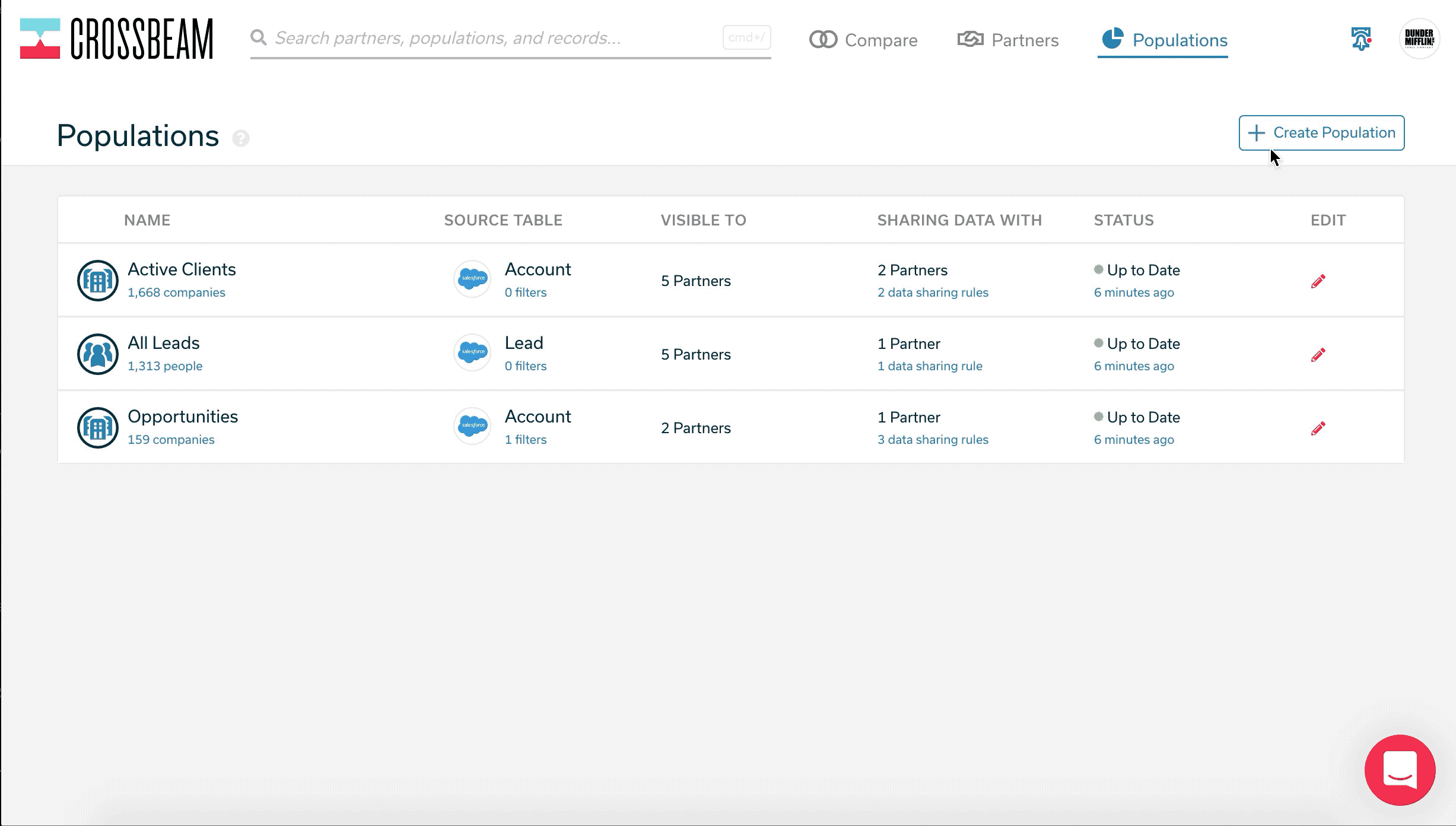
Step 2: Connect to Crossbeam and share data
Using our “request data” feature request data from your partner. Crossbeam only will share where there are overlaps, and only on the fields you select.
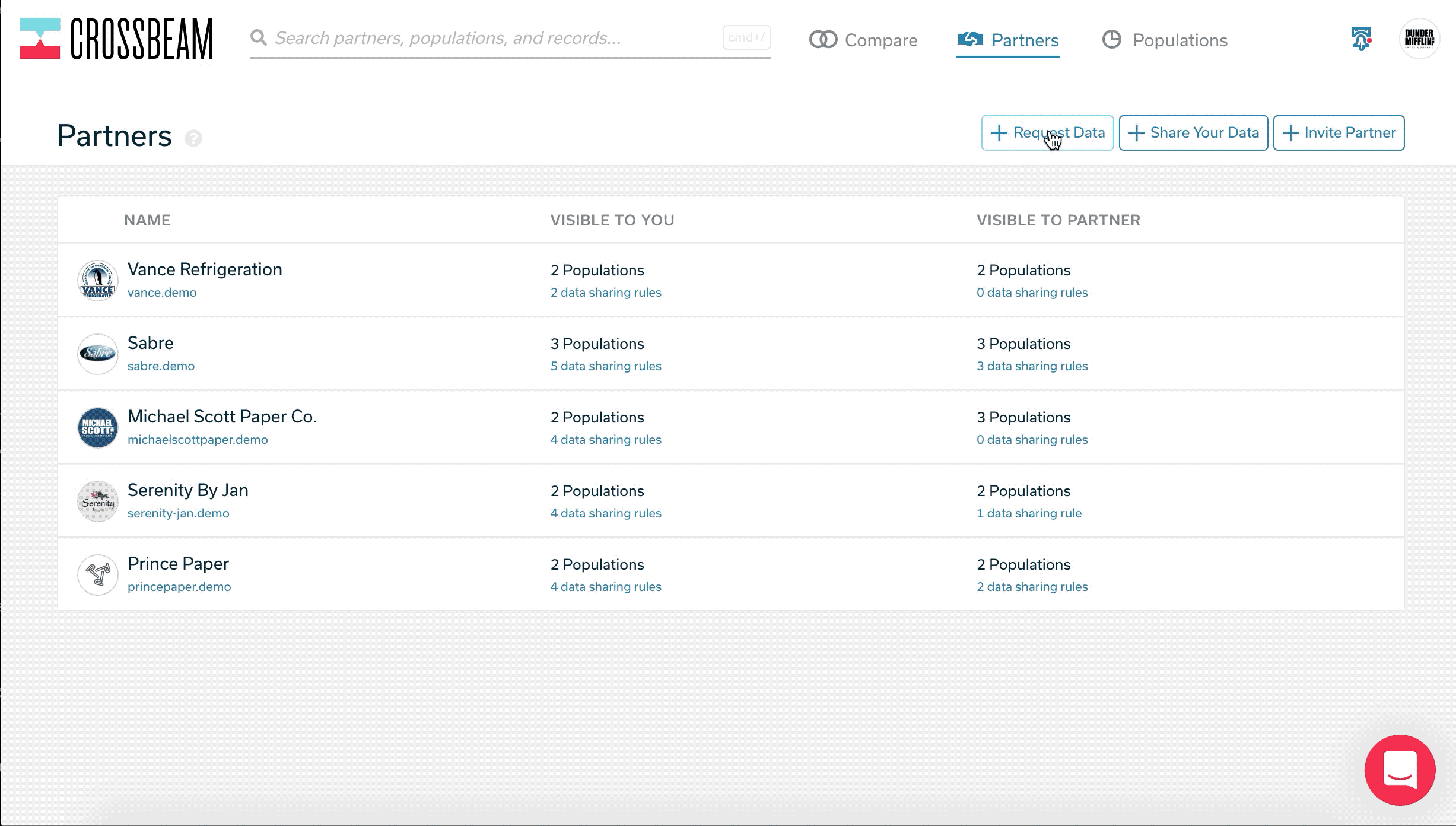
Step 3: Search overlaps
The more populations you share, the more targeted you can make your co-marketing efforts. Use our compare tool and create actionable co-marketing lists. Some examples:
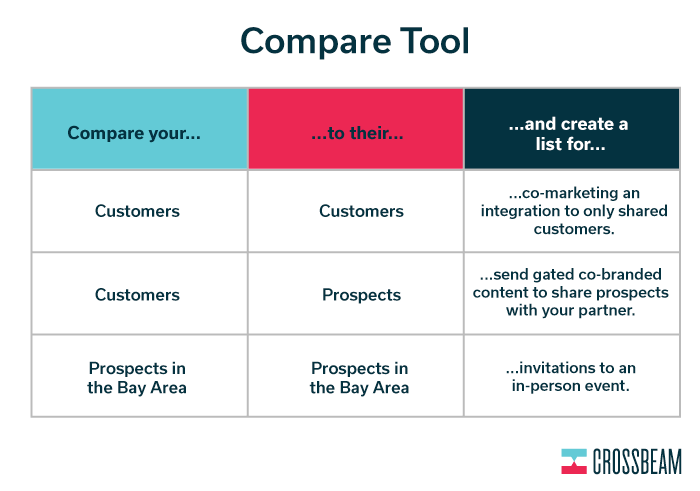
And if you have more than two partners, you can compare several partner populations in Crossbeam, ensuring that the same contact doesn’t receive the same campaign three (or more!) times.
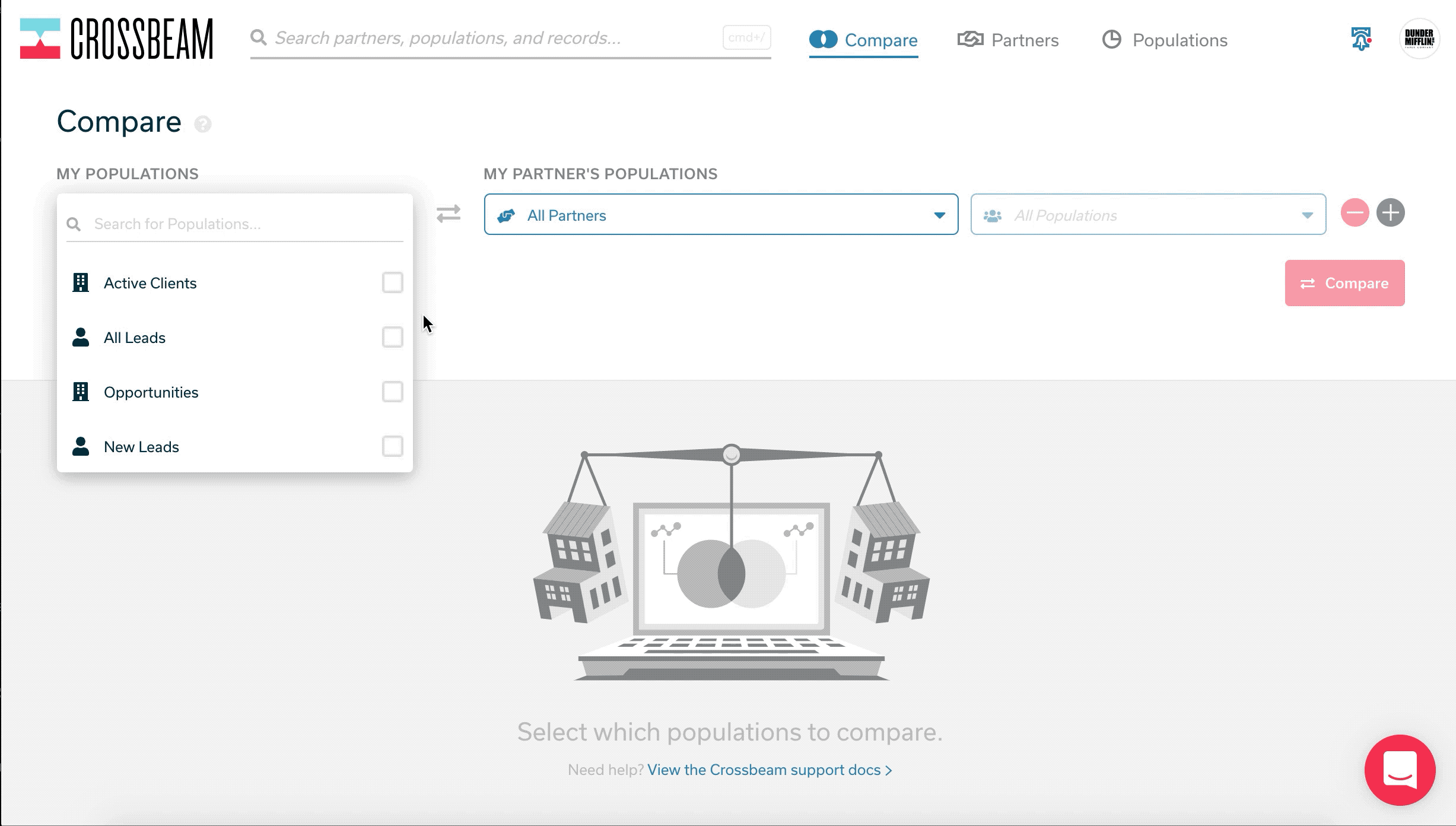
Step 4: Action
You have the co-marketing collateral and a list to send it to. What next? It’s time to take action. Depending on your campaign and goals, common next steps include:
- 1-to-1: Direct sales enablement. Further filter your list according to sales development representative (SDR) or customer success manager (CSM). Then, create talk tracks and collateral (see examples below) to give your SDRs or CSMs to follow up on a one-to-one basis.
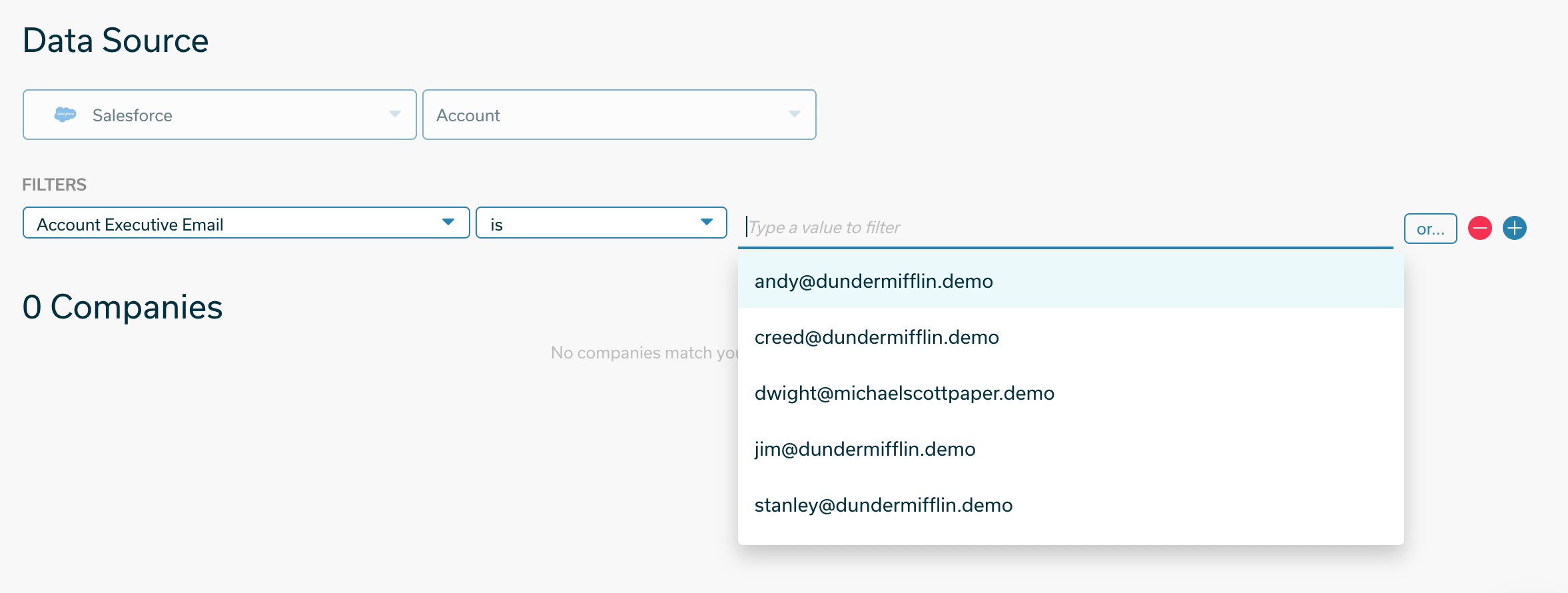
- 1-to-many: Export the shared list to an email service provider (ESP) or marketing automation solution. One partner can send the communication and share the results with the others.
- Use an independent third party to create a co-branded, co-marketing experience. Channel marketing platforms allow each party to run through workflow on the creative for a co-branded experience. Rather than send the collateral directly to your list, send potential customers to a lead capture page. This prospecting is especially useful if one side has a customer relationship.
Co-marketing motion examples
There are several types of co-marketing, but in general, they’re co-branded communication to a combined list. A co-marketing motion can involve several tactics. Here are the most common:
This is the most common form of co-marketing. Email co-marketing can take several forms:
- A shared “announcement” or press release of the partnership
- A nurture campaign
An example of a co-branded email announcement between Dropbox and Unsplash via Really Good Emails:

Pros:
- Actionable emails can help drive conversions and signups
- Requires few resources
- One-off emails don’t disrupt your marketing cadence
Cons:
- A one-time communication that readers may miss
- Need opt-ins from both your list and your partners
Webinar
Webinars (a portmanteau of “seminar” and “web”) are a shared live video presentation that is often recorded and made available later. Commonly they feature a presenter from each partner and an opportunity for attendees to interact directly with the presenters.
A shared landing page is created with an email form and sent to each partner’s audience and shared via social media channels. After filling out the form, attendees will receive a link to the webinar video zoom (often a zoom room) as well as link to the final recording. Note this example from Gainsight and Altify:

Pros:
- Gated content means you’ll receive new emails
- Live audience interaction doubles as customer research
- Scalable. Once you have the recording you can continue to market
Cons:
- Coordinating webinar topics with a partner can be a cumbersome process
- Time-consuming. Good webinars require lots of rehearsal and practice
Whitepapers
A whitepaper is a short article or research made available as a downloadable PDF. A good whitepaper will lean on the unique insights and data of you and your partner.
A co-branded whitepaper from Looker and Indexima:

Pros:
- Gated content means you’ll receive new emails
- Scalable. Make once and continue to market.
Cons:
- Not easily shareable or searchable from the web.
E-books
Digital or printed long form content, usually at least 20 printed pages.
One example: Babelquest is a Hubspot reseller or channel partner, and they offer an ebook Data to Insight to Action that is promoted by both companies:
Another: TripActipons partnered with Skift for the ebook Skift State of Business Travel 2020 Report

Pros:
- Gated content means you’ll receive new emails
- Scalable. Once you have, you can continue to market
- Credibility builder. If high quality can elevate both brands
Cons:
- Extremely time-consuming. Doubly so if you miss the mark on your topic or positioning
- Contents are not searchable or scannable on the open web
Events
An in-person meeting, workshop, seminar, or conference. Oftentimes, these events are small private dinners or happy hours that piggyback on a larger event, like Dreamforce.
Example: Mailchimp, Leadfeeder, and PieSync hosting a happy hour in Finland.

Pros
- In-person events form the deepest relationship with your community and customers
Cons
- Costly
- Time-consuming
Case studies / Testimonials
E-mailing case studies and testimonials of shared customers, usually promoting the benefits of a tech integration between you and your partner.
An example partner case study from Cisco and Arara about their work on Starbucks:

Case study by Sensei Labs Conductor and A.T Kearney:

This form of co-marketing requires a bit of a one-two:
- You need to interview shared customers…
- …and then market to potential customers
A case study or a testimonial is likely an output of an existing relationship.
Pros
- Sales enablement
- Actionable. Case studies tend to convert into demos and signups a higher rate than other forms of marketing.
Cons
- Small audience. Use cases are often for very particular circumstances that may not be shared by the reader.
The benefits of co-marketing
We’re living in the Era of the Ecosystem, where most tech tools are able to integrate with one another forming a tech “stack” for their customers. “One-stop” solutions are losing out to this interconnected group of tools.
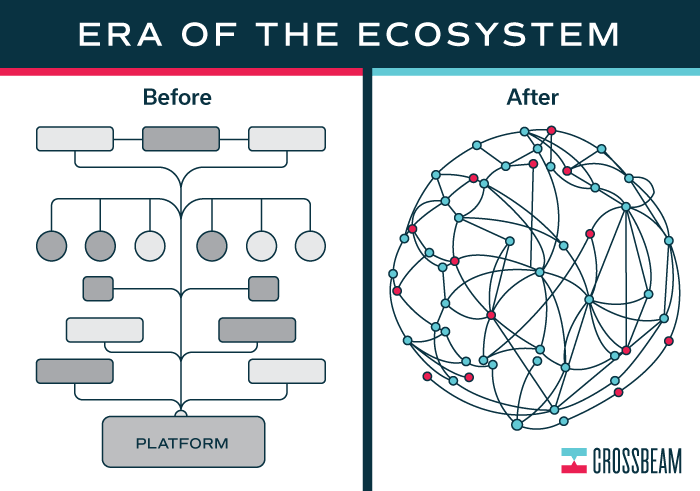
As a partner manager, this is good news for you. Each tool has its own marketing department, customer base, and feature set. In today’s SaaS environment, you have more potential partners than ever. This can dramatically increase your potential audience—if you’re willing to hustle a bit.
So if you’re only marketing to your existing list of prospects, you’re not fully taking advantage of the market forces at your back and taking advantage of the four benefits of co-marketing:
- Building your list and expanding your network
- Providing immediate value to your partner
- Warming your prospects
- Educating shared customers on an integration
Building your list and expanding your network
Co-marketing puts your product or message in front of an adjacent but relevant network of people. It’s like when your best friend introduces you to a new band they know you’d like vs seeing an advertisement—when the recommendation comes from a trusted source, you’re more likely to pay attention.
We use co-marketing here at Crossbeam for this reason. For example, here is a webinar we did with our friends at Allbound
And this is the effect it had on our mailing list:

Providing immediate value to your partner
Let’s face it: a lot of partners can waste your time. And when you have a sales or lead quota to hit, wasted time means missing your targets for the quarter.
An easy way to stress test a potential partnership is to execute a low-friction co-marketing motion. It’s also an easy way to prove your own value and that you’re worth more partner resources. Setting up a tech integration or co-selling requires expensive resources and greater coordination than, say, a joint blog post.
Warming your prospects
This works best when you combine a list of your leads or prospects with a list of your partner’s prospects or leads:
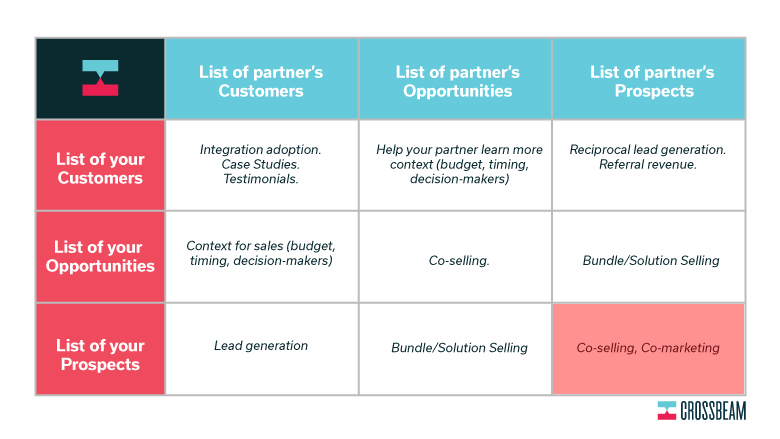
Chances are your current prospect list has seen your normal playbook several times over. With a co-marketing campaign, you can offer something fresh and newsworthy, getting their attention and allowing them to opt-in to a new experience and move along in your pipeline.
Educating shared customers on an integration
If you’ve created a technology integration, there’s a specific set of users who can benefit: your shared users.
(See our post: When is a Tech Partnership a Waste of Time?)
Sending out more details about how to install and take advantage of an integration will drive adoption and make your product stickier than ever.
Turn your ecosystem into your #1 revenue source
Get started in under a minute. Instantly capture insights from your partners. Identify more opportunities. Did we mention it’s free?



